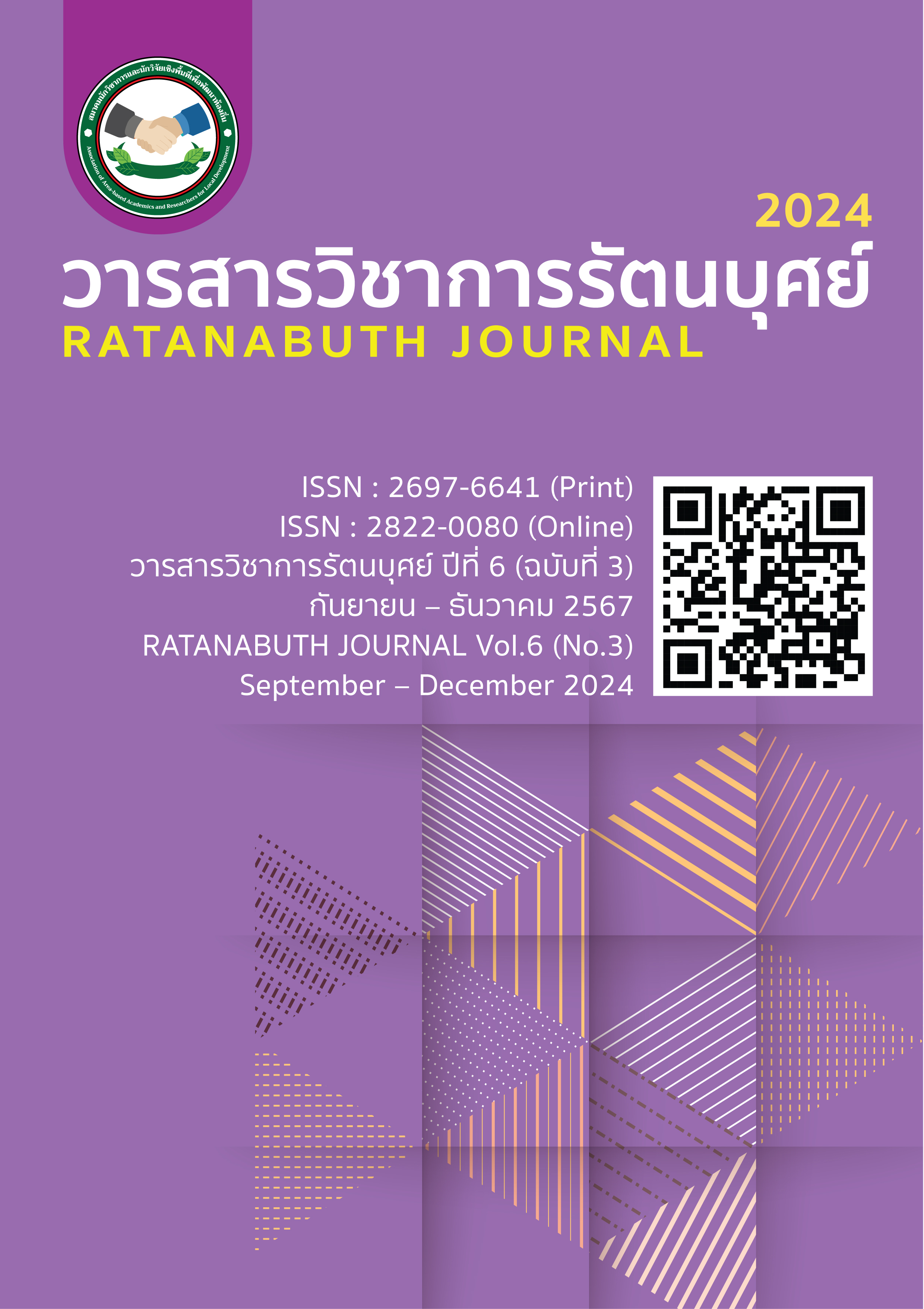Motivation of Thai Generation Y Tourists Towards Gastronomy Tourism In San Sai District Area Chiangmai Province Motivation of Thai Generation Y Tourists Towards Gastronomy Tourism In San Sai District Area Chiangmai Province
Main Article Content
Abstract
The objective of this research were to: 1) study the level of motivation for food tourism among Generation Y tourists in San Sai District, Chiang Mai Province; 2) compare the motivation for food tourism among Generation Y tourists in San Sai District, Chiang Mai Province, based on personal characteristics; and 3) compare the motivation for food tourism among Generation Y tourists in San Sai District, Chiang Mai Province, based on tourism behavior. Data were collected from Generation Y tourists who visited 16 restaurants participating in the Lanna Food Culture Project with San Sai Subdistrict Municipality, Chiang Mai Province, through an app, with a total of 400 respondents. The statistical methods used for data analysis included mean, standard deviation, t-test, and F-test.
The research findings indicated that the overall motivation for food tourism among Generation Y tourists in San Sai District, Chiang Mai Province, was at a high level. When examining specific aspects, it was found that motivation related to pull factors was higher than motivation related to push factors.
The hypothesis testing revealed that: 1) the motivation for food tourism among Generation Y tourists in San Sai District, Chiang Mai Province, did not differ based on personal characteristics; 2) the motivation for food tourism among Generation Y tourists in San Sai District, Chiang Mai Province, differed based on tourism behavior, with significant differences observed in terms of tourism experience and tourism patterns at the .05 level
Article Details

This work is licensed under a Creative Commons Attribution-NonCommercial-NoDerivatives 4.0 International License.
References
กัลยา วานิชย์บัญชา.(2549).การวิเคราะห์สถิติขั้นสูงด้วย SPSS for Windows.พิมพ์ครั้งที่ 5.กรุงเทพฯ : ภาควิชาสถิติ คณะพาณิชยศาสตร์และการบัญชี จุฬาลงกรณ์มหาวิทยาลัย
กัญญา ปรียาอิสรา. (2558).การพัฒนาการท่องเที่ยวเชิงอาหารเพื่อส่งเสริมเศรษฐกิจท้องถิ่น : กรณีศึกษาจังหวัดเชียงใหม่. การศึกษาพิเศษ มหาวิทยาลัยเชียงใหม่.
บุญเลิศ จิตตั้งวัฒนา.(2555). พฤติกรรมนักท่องเที่ยว. นนทบุรี : หจก. เฟิร์นข้าหลวง พรื้นติ้งแอนด์ พับลิชซิ่ง
Boniface P. and Fowler P.J. (1993). Heritage and Tourism in the 'global village', London: Routledge.
Cochran, W.G. (1963). Sampling Techniques. A Wiley International Edition. New York: John Wiley and Sones, Inc.
Crouch, G. I., & Ritchie, J. R. B. (1999). Tourism, competitiveness, and societal prosperity. Journal of Travel Research, 38(1), 11-19. https://doi.org/10.1177/004728759903800102.
Dann, G. M. (1981). Tourist Motivation an Appraisal. Annals of Tourism Research, 8, 187-219.
Barnard, C. I. (1938). The functions of the executive. Cambridge, MA: Harvard University Press.
Harris, C. (2003). “Food, travel, and trade in the early modern period”. In Food in the Early Modern World: A Cultural History (pp. 15-35). Routledge.
Hjalager, A., & Richards, G. (2002). Tourism and Gastronomic. London: Routledge.
Hsu, C. H. C., Chen, M. F., & Ritchie, J. R. B. (2010). Examining the relationships between service quality, customer satisfaction, and customer loyalty: A case study of food tourism. Journal of Travel & Tourism Marketing, 27(6), 743-758. https://doi.org/10.1080/10509585.2010.530716
Smith, R., & Costello, T. (2009). Tourism experiences and the impact of food tourism. Journal of Travel Research, 48(4), 379-391. https://doi.org/10.1177/0047287508321184.
Macionis, J. J., & Cambourne, B. (2003). Tourism: Principles and practice. Routledge.


